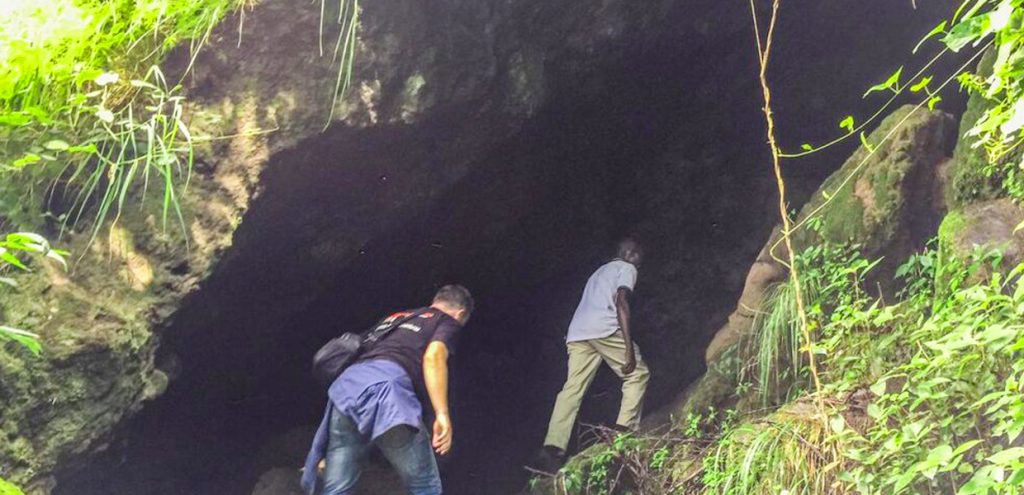When the 19th century explorer Joseph Thompson first visited Mount Elgon region, he discovered a series of deep caves in which herds of cattle sheltered and great piles of grain were stored, these are what are term as Mount Elgon caves.
The ancient volcano of Mount Elgon is penetrated by a suite of highly-unusual caves. The larger caves of Kitum, Ngwarisha, Chepnyalil, and Makingeny are neither limestone solution caves, nor lava tubes. Their origin lies in the interplay of unique geology with the fauna – particularly the savannah elephants and other mammals who ‘mine’ the salt-bearing rock from the walls of the caves. While here, you can as well discover some caves that are well designed with seats to have you rest a bit as you go deep the falls.

To some people, they think it’s manmade because it is such an amazing stopover, yet it was naturally made by God. Surprisingly, it is said that in the years of Amin Dada’s regime, the government of Uganda held its meeting from that cave.
Some other caves are small and link to Kenya, however, they are too dark to give you a proper direction to get to the border of Kenya. Those that tried to use this route were killed on the way by wild animals and for others; it was too dark to access the route.
More About Mount Elgon Caves
It is now close to 30 years since these mysterious elephants disappeared into the dark labyrinth of caves to excavate the mineral-rich rock for salt. The species of elephant who live on the mountain are savannah elephants (‘Loxodonta Africana’), not the forest elephants of west and central Africa.
The most frequently visited cave on Mount Elgon is Kitum, meaning ‘Place of Ceremonies’, in Maasai, which is over 60metres wide penetrating 200metres into the mountain.
Kitum cave is one of the caves found on Mount Elgon National Park, on the Kenyan side. It became well known in the 1980s when two European visitors contracted Marburg virus there. It is one of the five named ‘elephant caves’ of Mount Elgon where animals, including elephants, ‘mine’ the rock for its sodium rich salts.
It is also a non-solution cave developed in pyroclastic (volcanic) rocks, not, as some have presumed, a lava tube. It extends about 200 metres (700 ft) into the side of Mount Elgon near the Kenya – Uganda border. The walls are rich in salt, and animals such as elephants have gone deep into the cave for centuries in search of salt.
The elephants use their tusks to break off pieces of the cave wall that they then chew and swallow, leaving the walls scratched and furrowed. Their actions have likely enlarged the cave over time.
Other animals including bushbucks, buffaloes and hyenas come to Kitum Cave to consume salt left by the elephants. There is a lot of bat guano deeper in the cave from fruit-eating and insectivorous bats. There is also a deep crevasse into which some young elephants have fallen before and died.
Besides Mount Elgon caves, visitors to Mount Elgon National Park, have always expressed interest in hiking Mount Elgon adventure. You may also complement your adventure with hiking Rwenzori mountains experience, a visit to Bwindi Impenetrable National Park for an amazing gorilla trekking safari, to encounter the mountain gorillas. This is one of the most exciting Uganda safaris that most visitors have had and turned so memorable.
